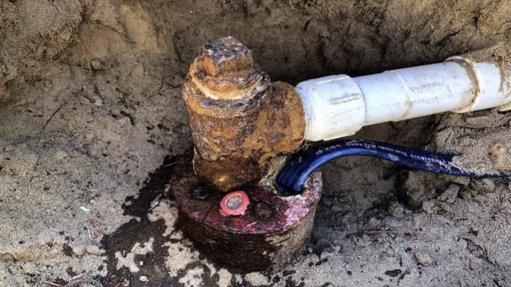
By Sameera Mohamed and Lebogang Nhleko
The engineering, environmental, mining and industrial sectors in South Africa and broader Africa are undergoing a dynamic transformation with the emergence of a new generation of young professionals. It has become increasingly clear that bridging technology gaps, providing practical experience opportunities, and nurturing the enthusiasm and innovative spirit of these young individuals are vital for the continued growth and success of these sectors.
About 12% of South Africa’s population resides in exclusively groundwater-dependent settlements. The development of groundwater supply schemes worldwide and in South Africa is threatened by production borehole clogging, as a result of enriched naturally occurring soluble iron (Fe2+) and manganese (Mn2+) in the groundwater. Studies have indicated that the interaction between biological clogging (biofouling) and inorganic Fe/Mn oxide precipitation is the primary cause of iron-related clogging in boreholes. The clogging of water supply infrastructure (borehole screens and pumps, specifically), jeopardises its sustainability as a result of reduced borehole yields and even failed boreholes.
In recent years, in situ iron removal treatment has been investigated for application in the primary Atlantis aquifer in the Western Cape Province. This aquifer is the main contributor to municipal water supply to the towns of Atlantis, Mamre and the Silwerstroom Resort. However, the production boreholes of the scheme have been beleaguered by clogging.
In response, the Council forGeoscience (CGS), funded by the Water Research Commission, developed a groundwater remediation technology that aims to remediate clogging due to Fe and Mn. The CGS envisages this to be the first of many patents envisioned to enhance borehole production. The technology, still under development, has successfully lowered Fe (<0.3 mg/ℓ) and Mn (<0.1 mg/ℓ) concentrations in groundwater to levels within World Health Organisation (WHO) and South African National Standards (SANS) for drinking water.
The technology developed at the CGS entails in situ iron removal (ISIR) using aerated abstracted groundwater as an alternative to costly ex situ remediation measures. ISIR treatment, using ozone as an oxidant (as per the CGS’s technology) is an innovative way to simultaneously treat high Fe levels in groundwater and to remediate borehole infrastructure. The setup, consisting of multiple injection boreholes surrounding the production borehole in a “daisy-wheel” arrangement, was applied at the Atlantis pilot test site.
The technology developed by the CGS has the potential to be applied in different aquifer environments, and is expected to be impactful in improving water security in areas relying on groundwater. The CGS hopes to industrialise the technology and make it more efficient, user friendly and compatible with accessible market-related technologies.